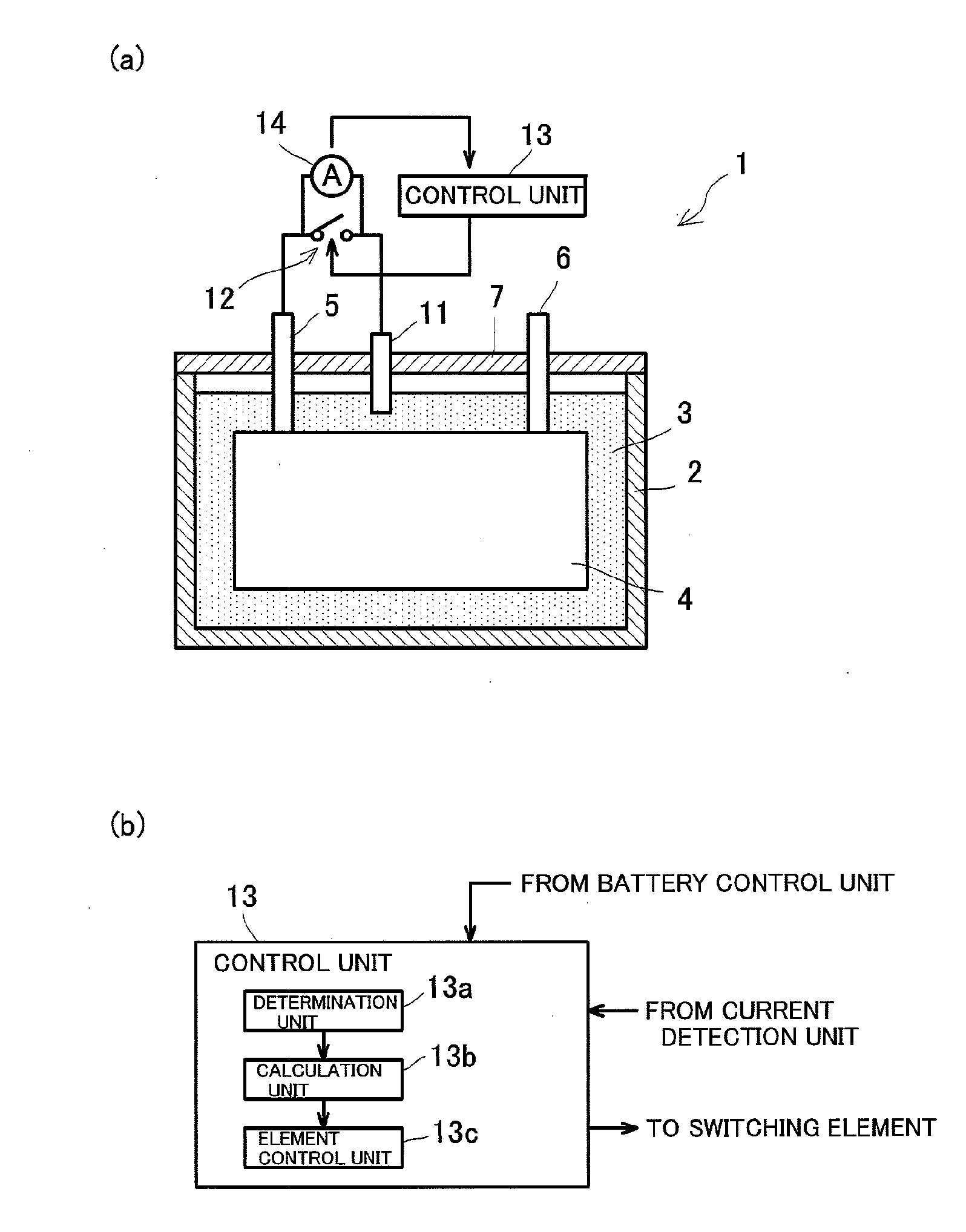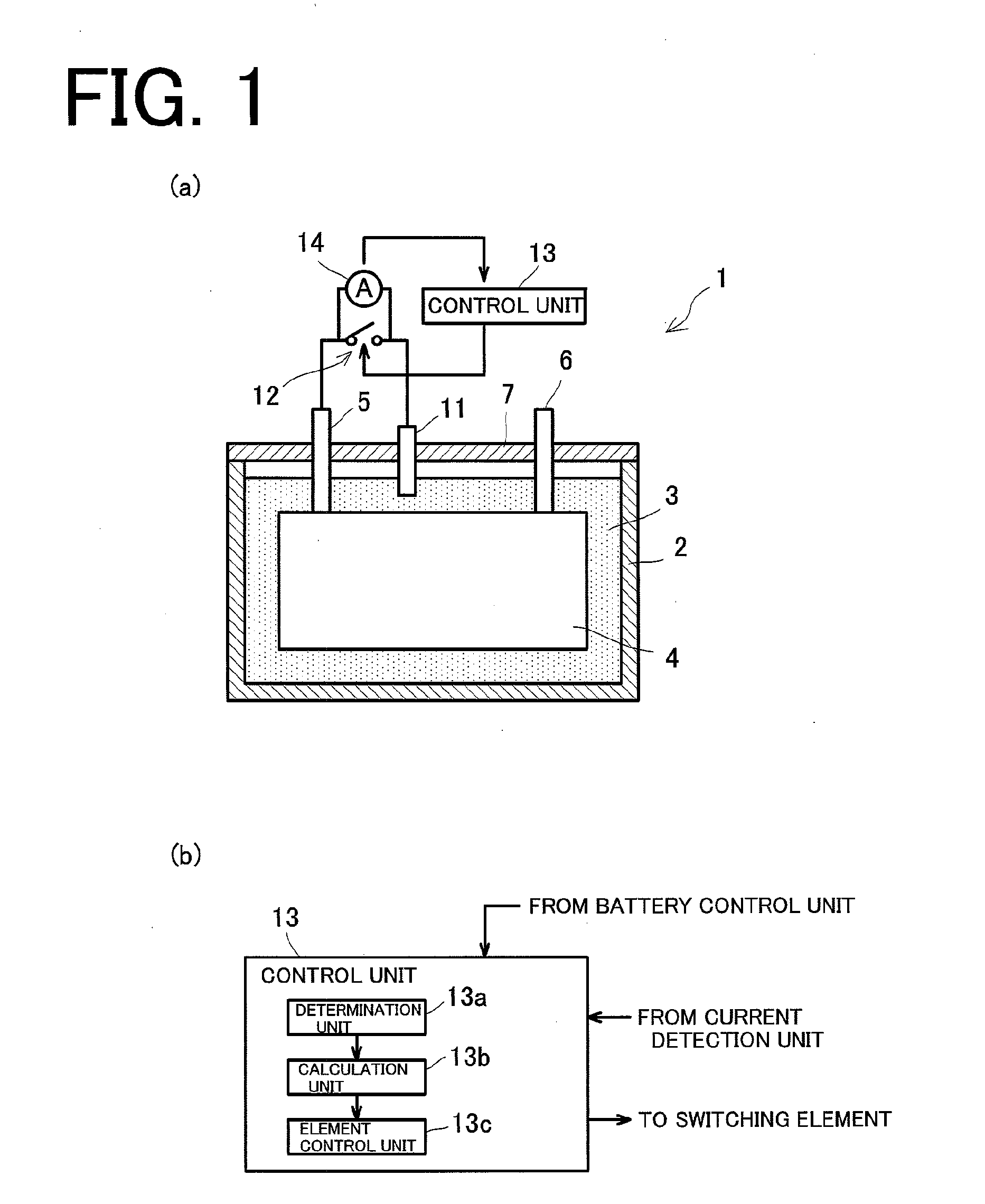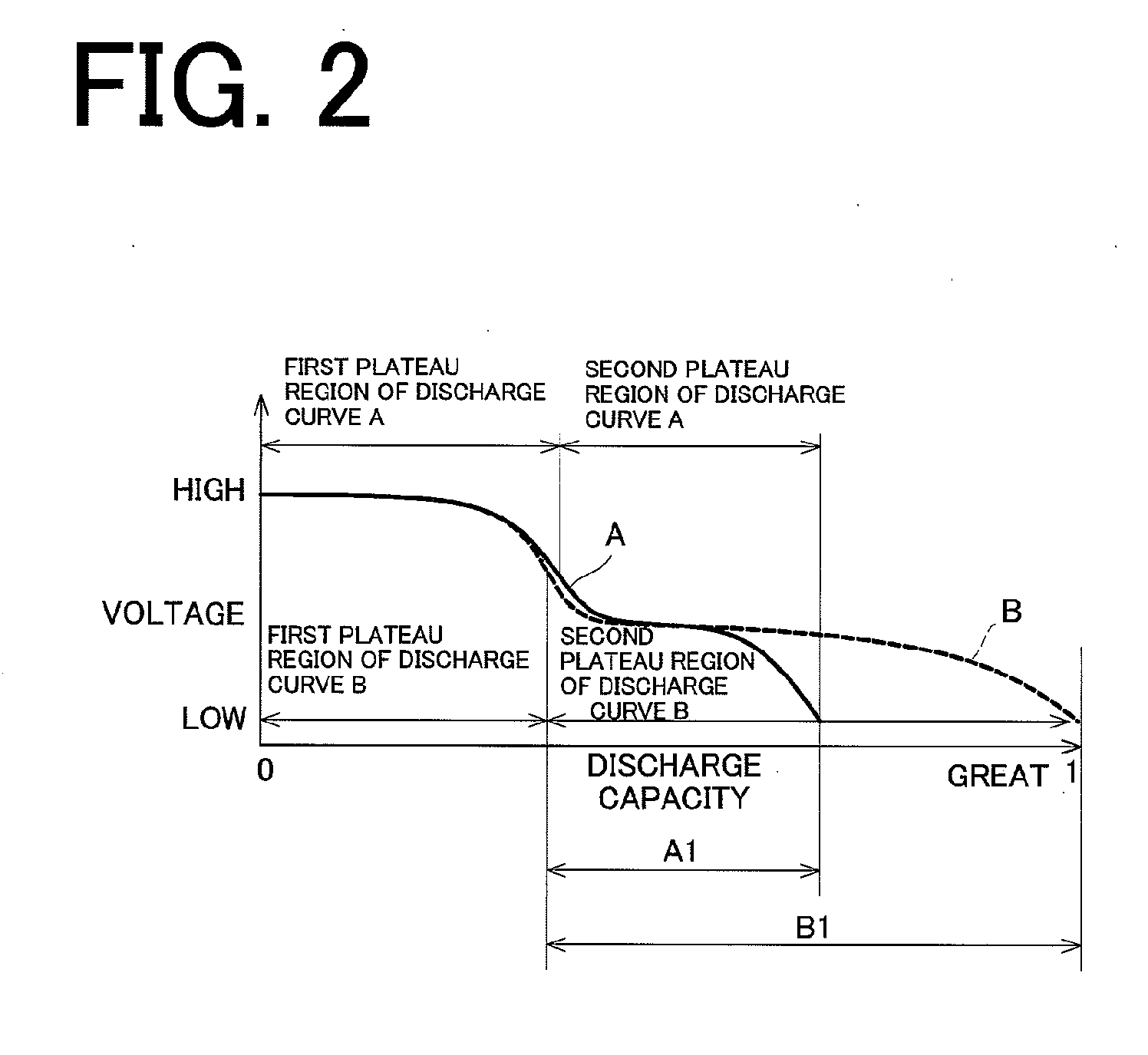Method for recovering capacity of lithium ion battery
a lithium ion battery and capacity recovery technology, applied in the field of lithium ion battery capacity recovery, can solve the problems of battery capacity decline, lithium ions movable between the electrodes decreasing, battery deformation, etc., and achieve the effect of suppressing the formation of lithium dendrites and excellent capacity of lithium ion batteries
- Summary
- Abstract
- Description
- Claims
- Application Information
AI Technical Summary
Benefits of technology
Problems solved by technology
Method used
Image
Examples
Embodiment Construction
[0020]The lithium ion battery of the present invention will now be described using FIGS. 1(a), 1(b).
[0021]A lithium ion battery 1 has a battery case 2. The interior of the battery case 2 is filled with an electrolytic solution 3. A power generation element 4 is housed in the battery case 2. The power generation element 4 comprises a wound stack of a positive plate and a negative plate, with a separator interposed therebetween. In the present invention, the positive plate is called a positive electrode, and the negative plate is called a negative electrode. The positive electrode and the negative electrode are referred to collectively as the electrode(s).
[0022]With the power generation element 4, a positive electrode terminal 5 is connected to the positive plate of the power generation element 4, and a negative electrode terminal 6 is connected to the negative plate of the power generation element 4. These positive electrode and the negative electrode are held by a case cover 7, whic...
PUM
 Login to View More
Login to View More Abstract
Description
Claims
Application Information
 Login to View More
Login to View More - R&D
- Intellectual Property
- Life Sciences
- Materials
- Tech Scout
- Unparalleled Data Quality
- Higher Quality Content
- 60% Fewer Hallucinations
Browse by: Latest US Patents, China's latest patents, Technical Efficacy Thesaurus, Application Domain, Technology Topic, Popular Technical Reports.
© 2025 PatSnap. All rights reserved.Legal|Privacy policy|Modern Slavery Act Transparency Statement|Sitemap|About US| Contact US: help@patsnap.com



